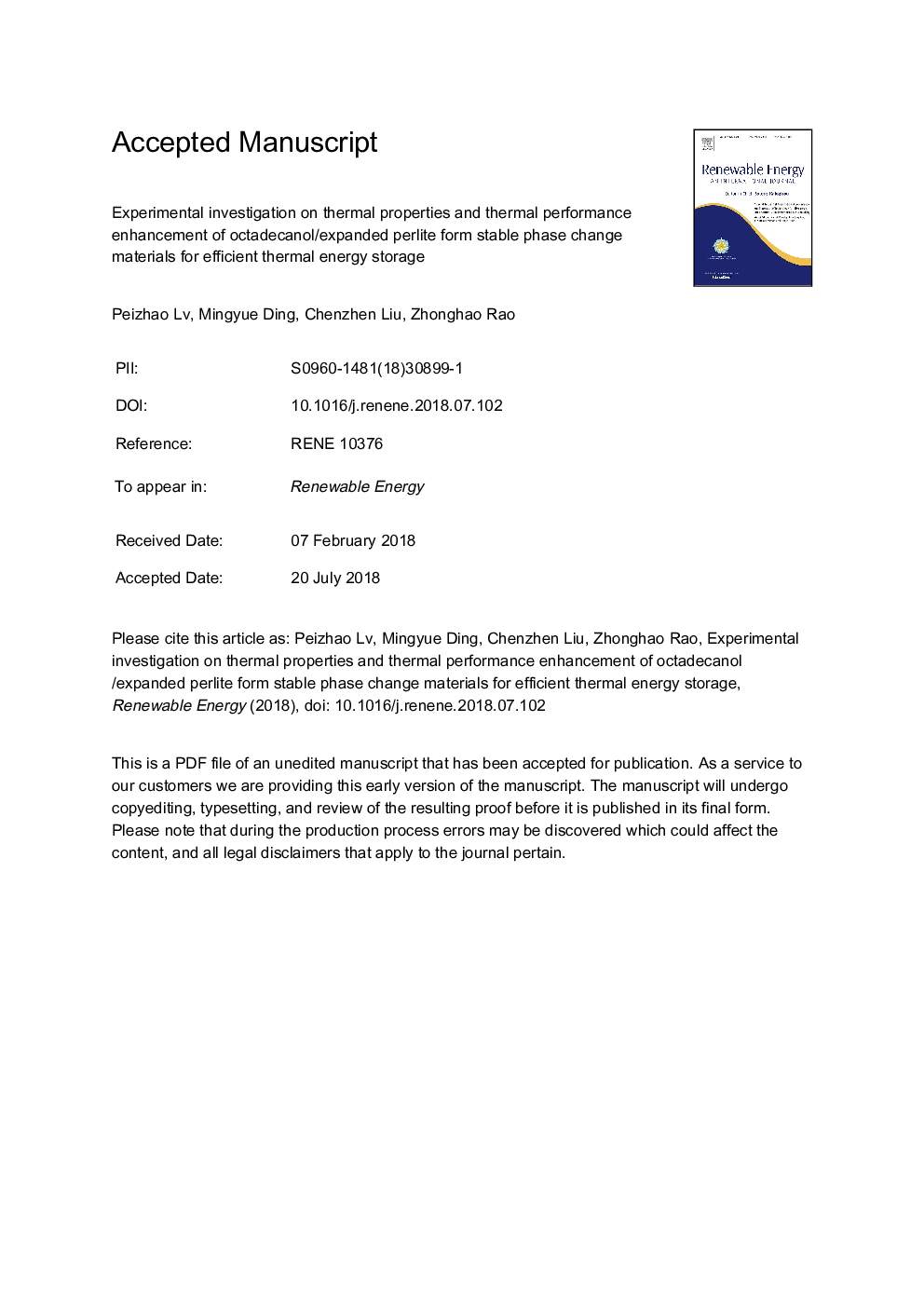| Article ID | Journal | Published Year | Pages | File Type |
|---|---|---|---|---|
| 6763703 | Renewable Energy | 2019 | 32 Pages |
Abstract
Octadecanol (OC) was employed as phase change material (PCM) to compound with expanded perlite (EP) because of its relatively high latent heat capacity (245.97â¯kJ/kg). OC/EP composites were prepared via vacuum impregnation method in this paper. The microstructure, chemical components and interactions that between two materials were characterized via Scanning Electron Microscope (SEM), X-Ray Diffraction (XRD) and Fourier Transform Infrared Spectroscopy (FTIR). The leakage-proof properties of OC within the composites were investigated and the leakage phenomena were weakened by adding expanded graphite (EG) with mass fractions of 5%, 10% and 15%. The mass fraction of OC maintains 60% without any leakage after adding EG (mass fraction of 15%). Latent heat capacity and phase change temperature were tested via Differential Scanning Calorimeter (DSC). Latent heat capacity of 60% OC/EP/15EG is 140.20â¯kJ/kg, and phase change temperature is 59.00â¯Â°C. The thermal conductivity of the composites was tested, and the variation tendency was linearly fitted. The thermal storage and release tests were performed to evaluate thermal performance of the composites. And the efficiency of the heat storage and release of OC/EP composites were improved significantly after filling EG (mass fraction of 15%) into the interspace that is among the particles of EP.
Keywords
Related Topics
Physical Sciences and Engineering
Energy
Renewable Energy, Sustainability and the Environment
Authors
Peizhao Lv, Mingyue Ding, Chenzhen Liu, Zhonghao Rao,
